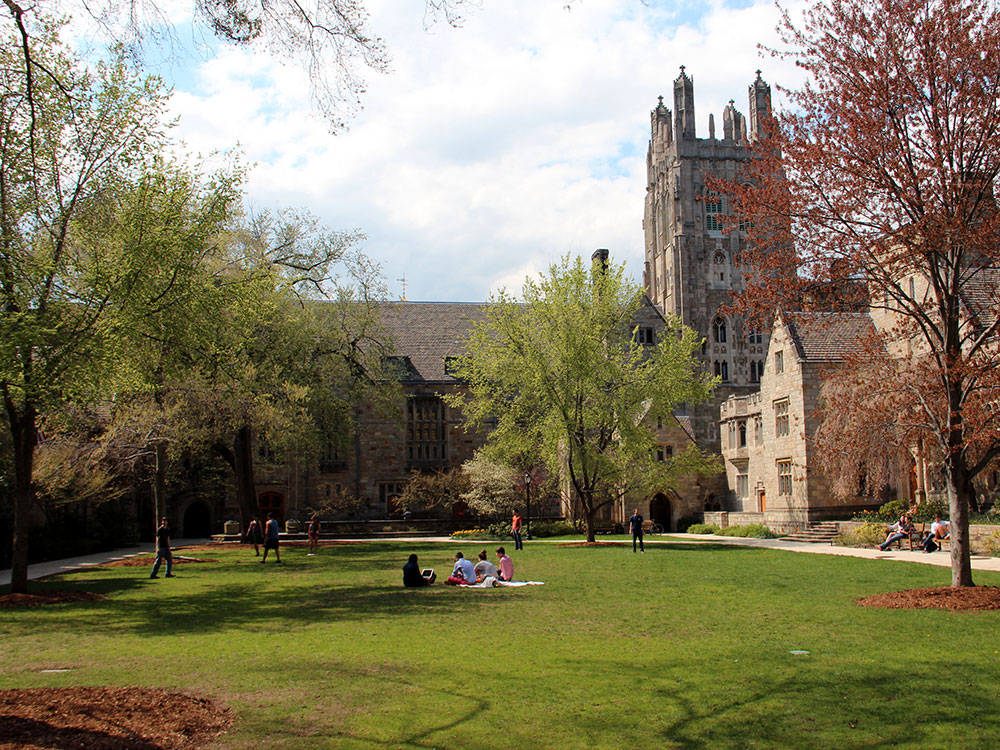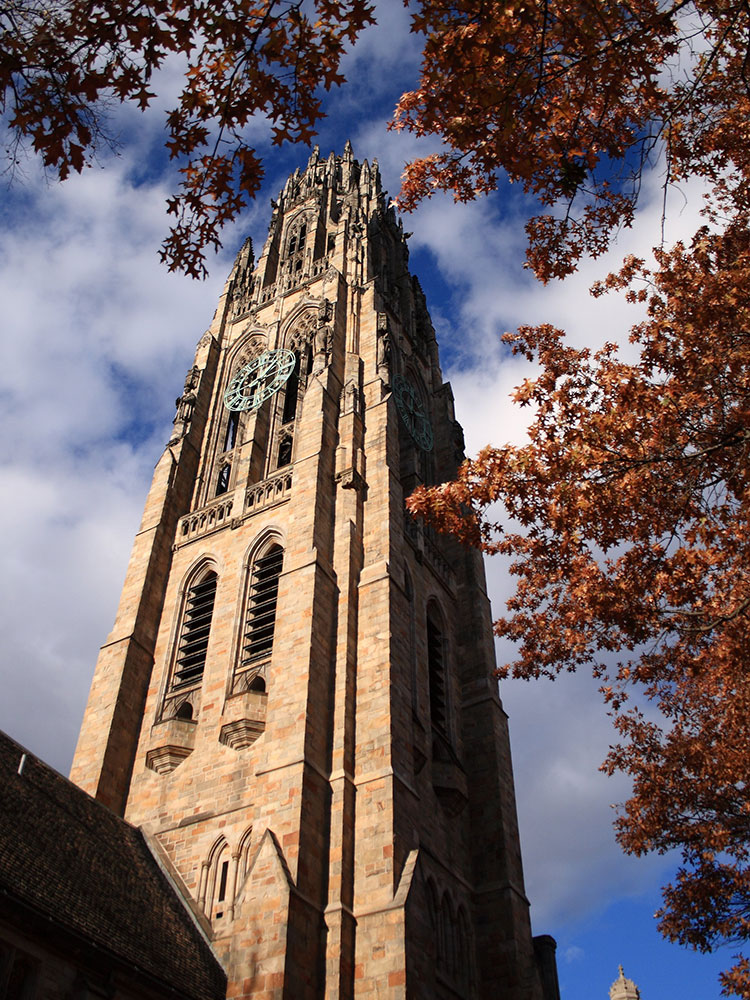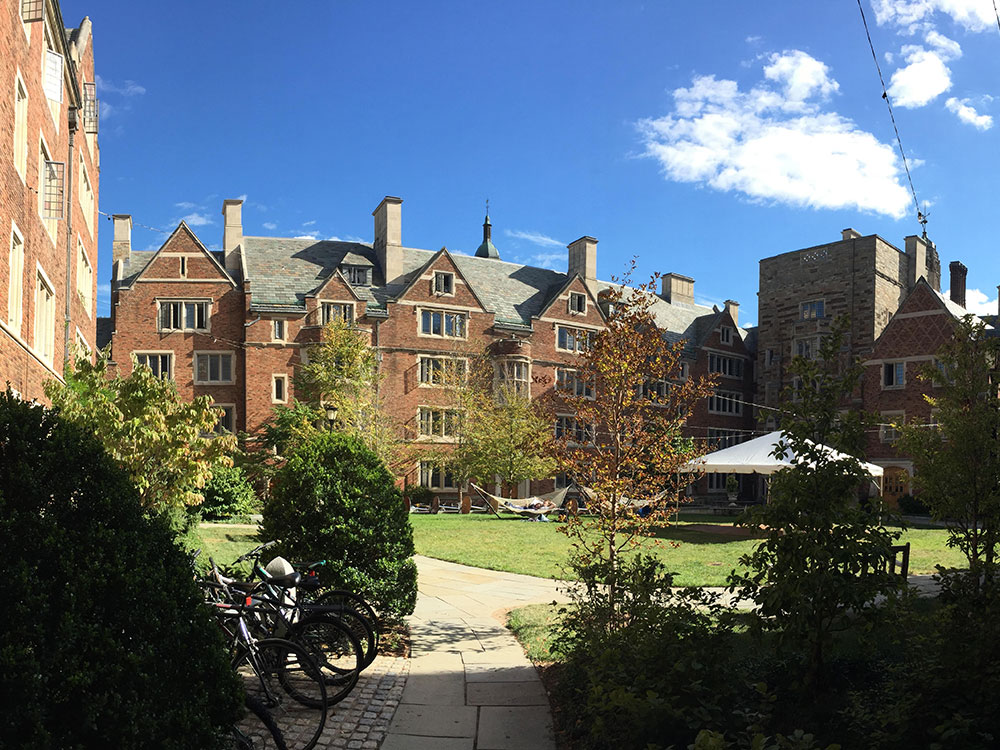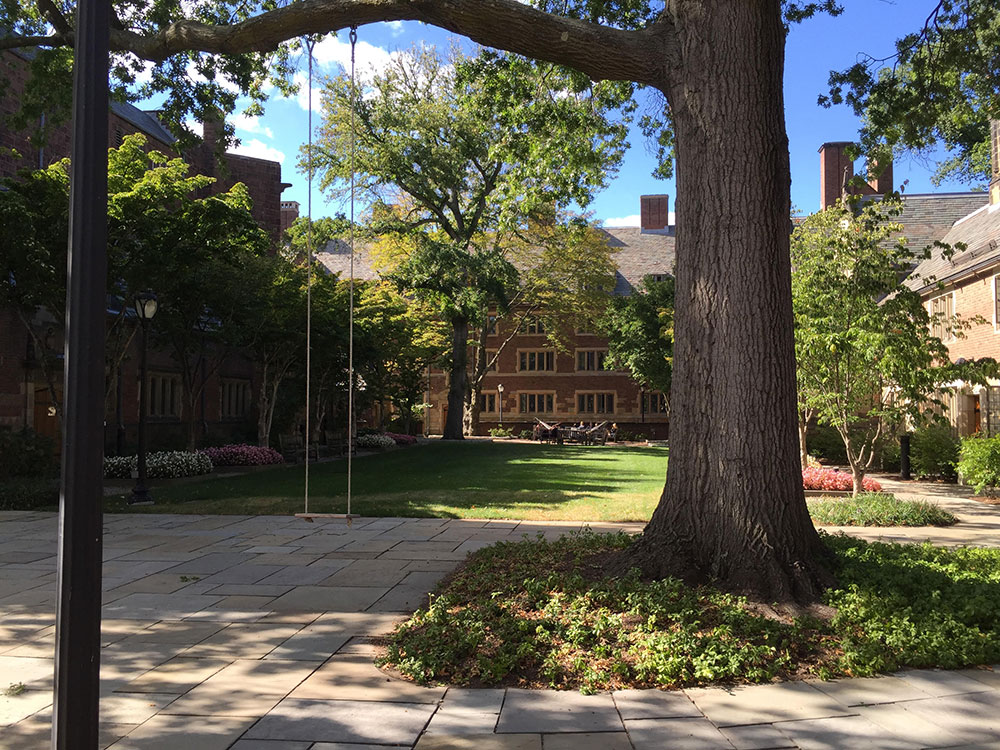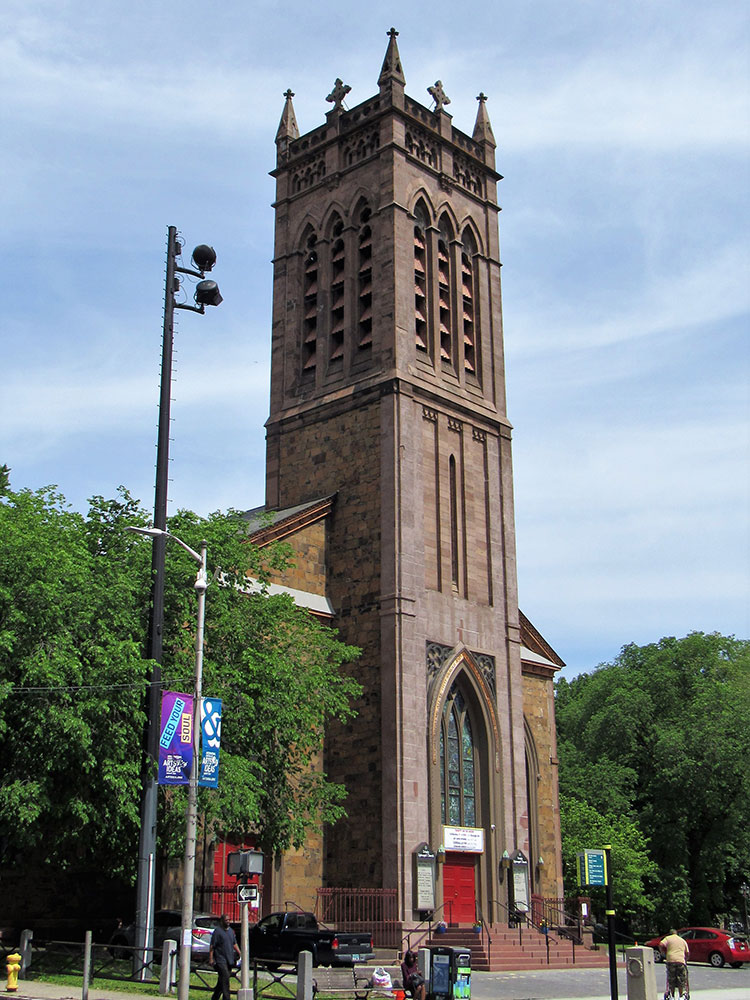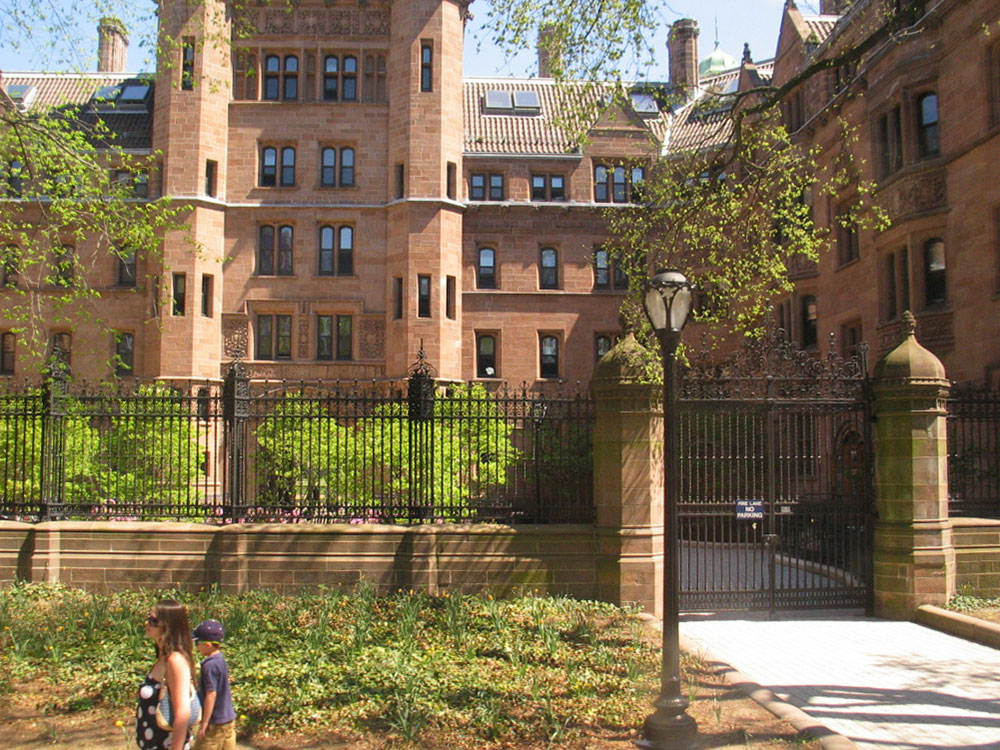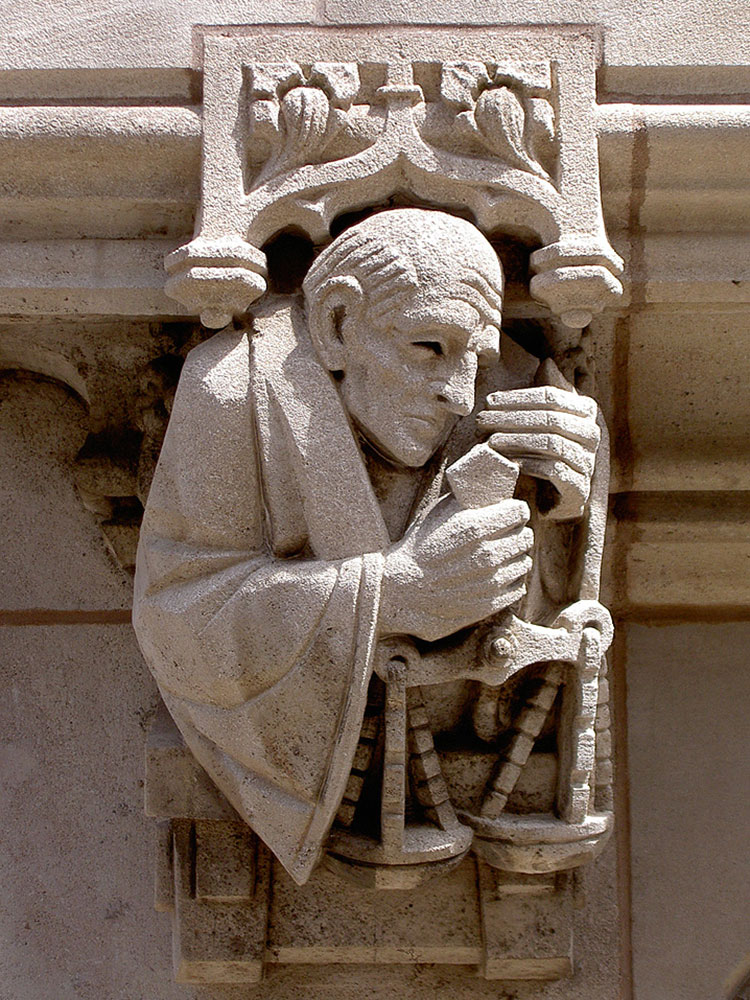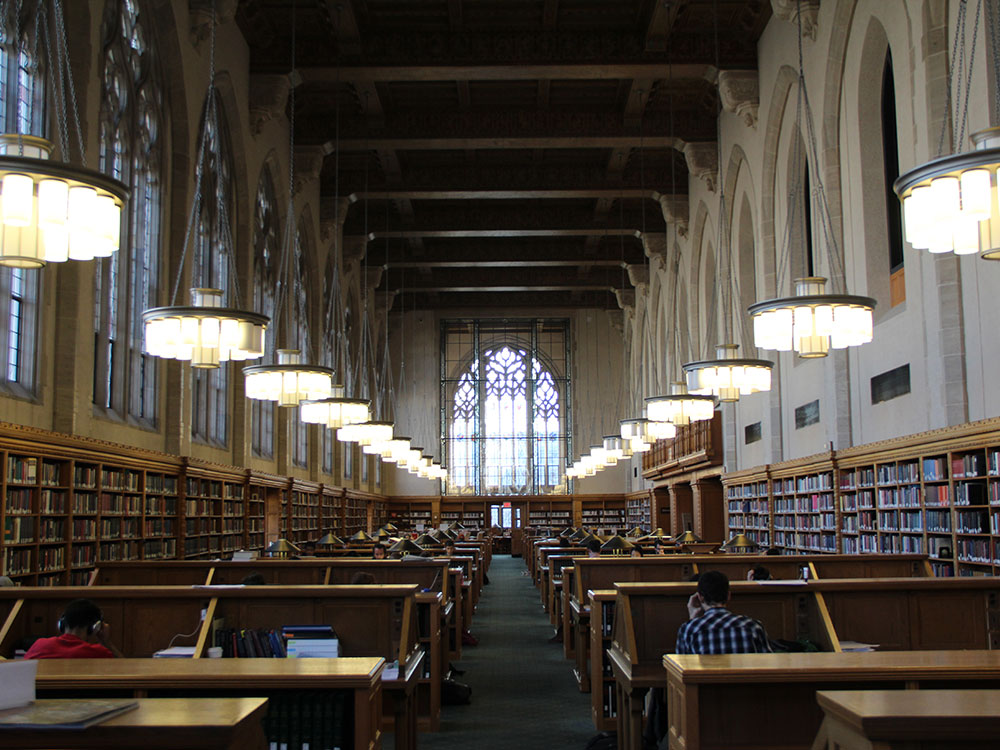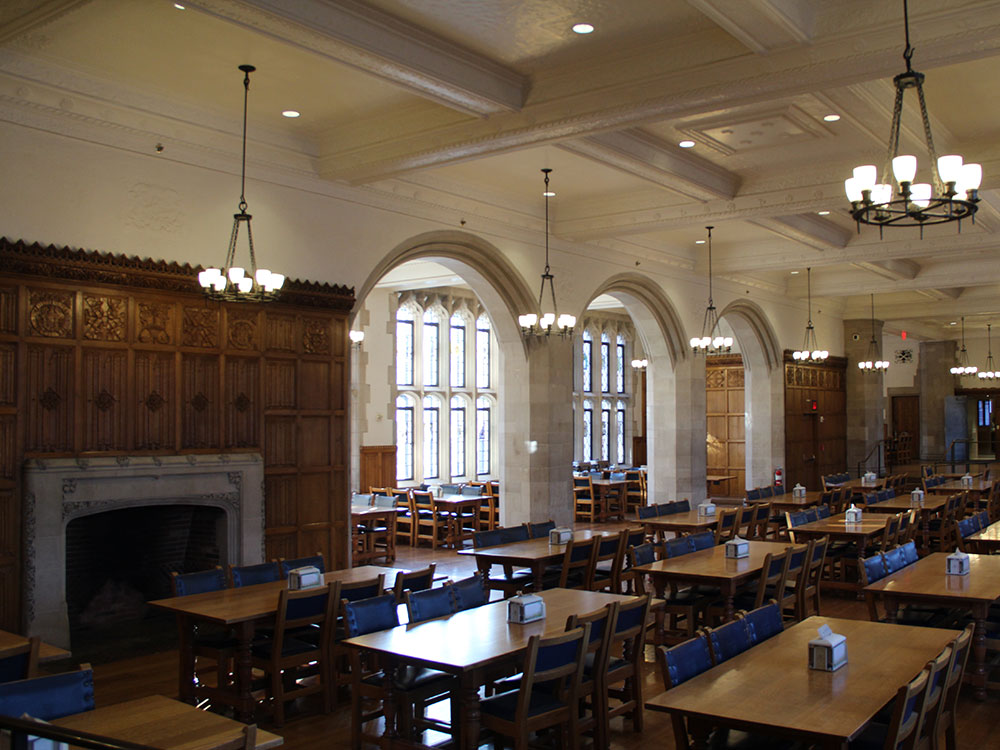General Information
How to Get There
Overview
Yale University is a private Ivy League research university in New Haven, Connecticut. Founded in 1701 as the Collegiate School, it is the third-oldest institution of higher education in the United States and one of the nine Colonial Colleges chartered before the American Revolution. The Collegiate School was renamed Yale College in 1718 to honor the school's largest private benefactor for the first century of its existence, Elihu Yale.
Chartered by Connecticut Colony, the Collegiate School was established in 1701 by clergy to educate Congregational ministers before moving to New Haven in 1716. Originally restricted to theology and sacred languages, the curriculum began to incorporate humanities and sciences by the time of the American Revolution. In the 19th century, the college expanded into graduate and professional instruction, awarding the first PhD in the United States in 1861 and organizing as a university in 1887. Yale's faculty and student populations grew after 1890 with rapid expansion of the physical campus and scientific research.
Yale is organized into fourteen constituent schools: the original undergraduate college, the Yale Graduate School of Arts and Sciences and twelve professional schools. While the university is governed by the Yale Corporation, each school's faculty oversees its curriculum and degree programs. In addition to a central campus in downtown New Haven, the university owns athletic facilities in western New Haven, a campus in West Haven, Connecticut, and forests and nature preserves throughout New England. As of June 2020, the university's endowment was valued at $31.1 billion, the second largest of any educational institution. The Yale University Library, serving all constituent schools, holds more than 15 million volumes and is the third-largest academic library in the United States. Students compete in intercollegiate sports as the Yale Bulldogs in the NCAA Division I - Ivy League.
As of October 2020, 65 Nobel laureates, five Fields Medalists, four Abel Prize laureates, and three Turing award winners have been affiliated with Yale University. In addition, Yale has graduated many notable alumni, including five U.S. Presidents, 19 U.S. Supreme Court Justices, 31 living billionaires, and many heads of state. Hundreds of members of Congress and many U.S. diplomats, 78 MacArthur Fellows, 252 Rhodes Scholars, 123 Marshall Scholars, and nine Mitchell Scholars have been affiliated with the university.
Yale's central campus in downtown New Haven covers 260 acres (1.1 km2) and comprises its main, historic campus and a medical campus adjacent to the Yale-New Haven Hospital. In western New Haven, the university holds 500 acres (2.0 km2) of athletic facilities, including the Yale Golf Course. In 2008, Yale purchased the 17-building, 136-acre (0.55 km2) former Bayer HealthCare complex in West Haven, Connecticut, the buildings of which are now used as laboratory and research space.
Yale is noted for its largely Collegiate Gothic campus as well as several iconic modern buildings commonly discussed in architectural history survey courses: Louis Kahn's Yale Art Gallery and Center for British Art, Eero Saarinen's Ingalls Rink and Ezra Stiles and Morse Colleges, and Paul Rudolph's Art & Architecture Building. Yale also owns and has restored many noteworthy 19th-century mansions along Hillhouse Avenue, which was considered the most beautiful street in America by Charles Dickens when he visited the United States in the 1840s. In 2011, Travel+Leisure listed the Yale campus as one of the most beautiful in the United States.
Many of Yale's buildings were constructed in the Collegiate Gothic architecture style from 1917 to 1931, financed largely by Edward S. Harkness, including the Yale Drama School. Stone sculpture built into the walls of the buildings portray contemporary college personalities, such as a writer, an athlete, a tea-drinking socialite, and a student who has fallen asleep while reading. Similarly, the decorative friezes on the buildings depict contemporary scenes, like a policemen chasing a robber and arresting a prostitute (on the wall of the Law School), or a student relaxing with a mug of beer and a cigarette. The architect, James Gamble Rogers, faux-aged these buildings by splashing the walls with acid, deliberately breaking their leaded glass windows and repairing them in the style of the Middle Ages, and creating niches for decorative statuary but leaving them empty to simulate loss or theft over the ages. In fact, the buildings merely simulate Middle Ages architecture, for though they appear to be constructed of solid stone blocks in the authentic manner, most actually have steel framing as was commonly used in 1930. One exception is Harkness Tower, 216 feet (66 m) tall, which was originally a free-standing stone structure. It was reinforced in 1964 to allow the installation of the Yale Memorial Carillon
Other examples of the Gothic style are on the Old Campus by architects like Henry Austin, Charles C. Haight and Russell Sturgis. Several are associated with members of the Vanderbilt family, including Vanderbilt Hall, Phelps Hall, St. Anthony Hall (a commission for member Frederick William Vanderbilt), the Mason, Sloane and Osborn laboratories, dormitories for the Sheffield Scientific School (the engineering and sciences school at Yale until 1956) and elements of Silliman College, the largest residential college.
The oldest building on campus, Connecticut Hall (built in 1750), is in the Georgian style. Georgian-style buildings erected from 1929 to 1933 include Timothy Dwight College, Pierson College, and Davenport College, except the latter's east, York Street façade, which was constructed in the Gothic style to coordinate with adjacent structures.
The Beinecke Rare Book and Manuscript Library, designed by Gordon Bunshaft of Skidmore, Owings & Merrill, is one of the largest buildings in the world reserved exclusively for the preservation of rare books and manuscripts. The library includes a six-story above-ground tower of book stacks, filled with 180,000 volumes, that is surrounded by large translucent Vermont marble panels and a steel and granite truss. The panels act as windows and subdue direct sunlight while also diffusing the light in warm hues throughout the interior. Near the library is a sunken courtyard, with sculptures by Isamu Noguchi that are said to represent time (the pyramid), the sun (the circle), and chance (the cube). The library is located near the center of the university in Hewitt Quadrangle, which is now more commonly referred to as "Beinecke Plaza."
Alumnus Eero Saarinen, Finnish-American architect of such notable structures as the Gateway Arch in St. Louis, Washington Dulles International Airport main terminal, Bell Labs Holmdel Complex and the CBS Building in Manhattan, designed Ingalls Rink, dedicated in 1959, as well as the residential colleges Ezra Stiles and Morse. These latter were modeled after the medieval Italian hill town of San Gimignano - a prototype chosen for the town's pedestrian-friendly milieu and fortress-like stone towers. These tower forms at Yale act in counterpoint to the college's many Gothic spires and Georgian cupolas.
Notable nonresidential campus buildings and landmarks include Battell Chapel, Beinecke Rare Book Library, Harkness Tower, Ingalls Rink, Kline Biology Tower, Osborne Memorial Laboratories, Payne Whitney Gymnasium, Peabody Museum of Natural History, Sterling Hall of Medicine, Sterling Law Buildings, Sterling Memorial Library, Woolsey Hall, Yale Center for British Art, Yale University Art Gallery, Yale Art & Architecture Building, and the Paul Mellon Centre for Studies in British Art in London.
Yale's secret society buildings (some of which are called "tombs") were built both to be private yet unmistakable. A diversity of architectural styles is represented: Berzelius, Donn Barber in an austere cube with classical detailing (erected in 1908 or 1910); Book and Snake, Louis R. Metcalfe in a Greek Ionic style (erected in 1901); Elihu, architect unknown but built in a Colonial style (constructed on an early 17th-century foundation although the building is from the 18th century); Mace and Chain, in a late colonial, early Victorian style (built in 1823). (Interior moulding is said to have belonged to Benedict Arnold);Manuscript Society, King Lui-Wu with Dan Kniley responsible for landscaping and Josef Albers for the brickwork intaglio mural. Building constructed in a mid-century modern style; Scroll and Key, Richard Morris Hunt in a Moorish- or Islamic-inspired Beaux-Arts style (erected 1869-70); Skull and Bones, possibly Alexander Jackson Davis or Henry Austin in an Egypto-Doric style utilizing Brownstone (in 1856 the first wing was completed, in 1903 the second wing, 1911 the Neo-Gothic towers in rear garden were completed); St. Elmo, (former tomb) Kenneth M. Murchison, 1912, designs inspired by Elizabethan manor. Current location, brick colonial; and Wolf's Head, Bertram Grosvenor Goodhue, erected 1923-1924, Collegiate Gothic.
Yale University Library, which holds over 15 million volumes, is the third-largest university collection in the United States. The main library, Sterling Memorial Library, contains about 4 million volumes, and other holdings are dispersed at subject libraries.
Rare books are found in several Yale collections. The Beinecke Rare Book Library has a large collection of rare books and manuscripts. The Harvey Cushing/John Hay Whitney Medical Library includes important historical medical texts, including an impressive collection of rare books, as well as historical medical instruments. The Lewis Walpole Library contains the largest collection of 18th-century British literary works. The Elizabethan Club, technically a private organization, makes its Elizabethan folios and first editions available to qualified researchers through Yale.
Yale's museum collections are also of international stature. The Yale University Art Gallery, the country's first university-affiliated art museum, contains more than 200,000 works, including Old Masters and important collections of modern art, in the Swartwout and Kahn buildings. The latter, Louis Kahn's first large-scale American work (1953), was renovated and reopened in December 2006. The Yale Center for British Art, the largest collection of British art outside of the UK, grew from a gift of Paul Mellon and is housed in another Kahn-designed building.
The Peabody Museum of Natural History in New Haven is used by school children and contains research collections in anthropology, archaeology, and the natural environment. The Yale University Collection of Musical Instruments, affiliated with the Yale School of Music, is perhaps the least-known of Yale's collections because its hours of opening are restricted.
This article uses material from the Wikipedia article "Yale University", which is released under the Creative Commons Attribution-Share-Alike License 3.0
Featured Locations
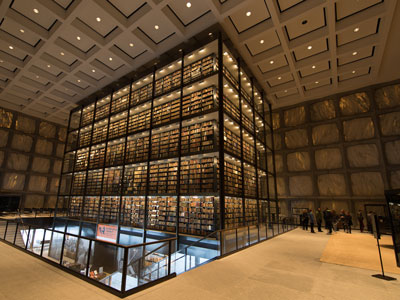
Michael Kastelic, CC BY-SA 4.0, via Wikimedia Commons; Image Size Adjusted
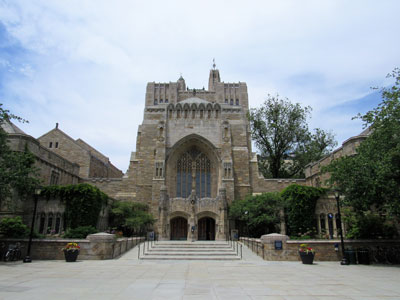
Farragutful, CC BY-SA 4.0, via Wikimedia Commons; Image Size Adjusted
_at_Yale-1000.jpg)
